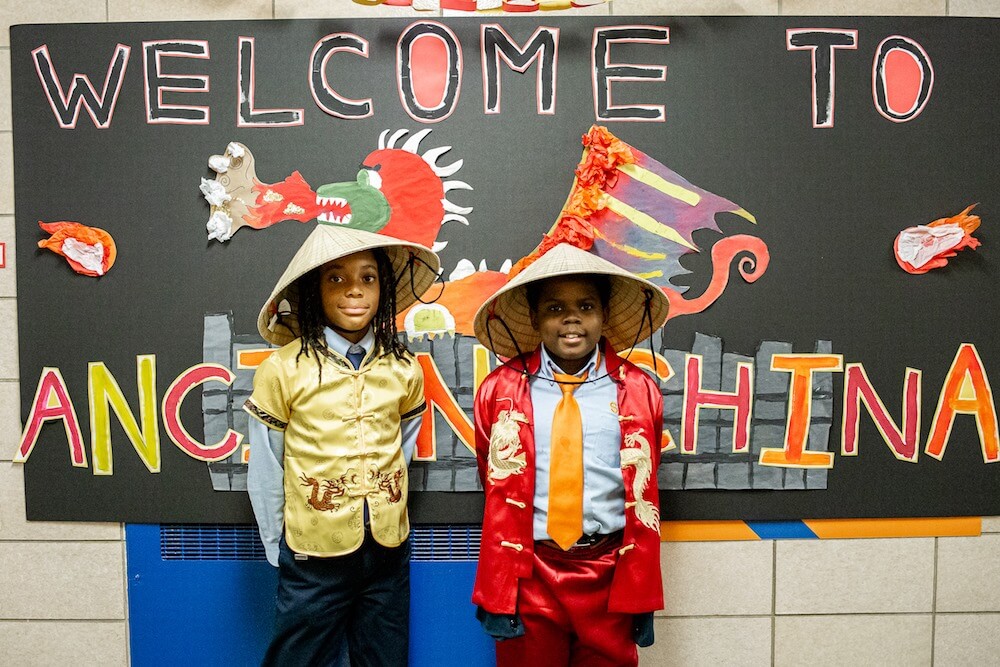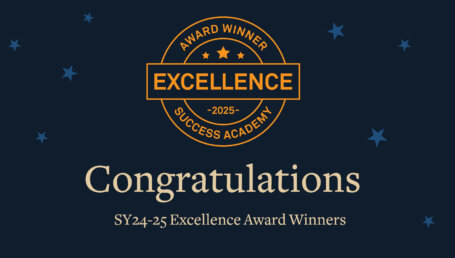
At Success Academy, you’ll never have to look very far to find a self-proclaimed history nerd. Perhaps one of our most passionate is Mark Soriano, head of middle school and high school content, who came to Success Academy years ago emboldened with an objective: to redefine the way history is taught in schools. In Mark’s view, elementary and middle school history curricula in most schools too narrowly focuses on American history, to the detriment of kids’ historical understanding. As a high school history teacher, Mark recalls, “I saw kids come from middle school who basically thought the world started in 1776!” He believed that a more effective approach would be to teach world history in depth in middle school, before students dive into the study of American history. This approach allows high schoolers to engage in American history at a more sophisticated level, and, if done right, can disrupt a narrowly Eurocentric perspective that too often mars how we understand our human and national heritage. He and Ezra Plancon, formerly program manager of middle school and high school content, partnered to develop a newly designed history program, and this year, the transition to three years of World History in middle school has begun. We sat down with Mark and Ezra to hear their thoughts on the new program and how it will benefit our middle schoolers.
Why is it important that middle school students study world history before American history?
Ezra Plancon: A lot of kids start out learning about America as if it just magically appeared and existed in a vacuum. That’s just not true! We wanted our scholars to understand that history is human history, and America comes as a part of that. Learning about different cultures, societies, and themes around the world sets kids up with a much stronger foundation for high school. So when they do dive into American history, they can ask themselves — how is a country interacting with the world around it? How is it informed by the recurring themes of history across time? When our students get to high school, this will help them analyze, for example, James Madison and the Federalist Papers, in a much more meaningful way.
Also, world history is fun! It’s fascinating to learn about Chinese fireworks and medicine and the Islamic Empire when you’re 10, 11, and 12 years old. So from an engagement and accessibility standpoint, it also made so much sense to invert the programs.
Mark Soriano: In the past, middle school and high school history were two different programs, even though we have a fully K-12 academic model. So we wanted to design a history program that was fluid and continuous from fifth grade all the way up through senior year of high school. That required us to take a step back and ask ourselves, “What are historical skills? How do we design a program that maximizes kids’ time and allows them to build momentum on their reading, writing, analysis, and discussion skills?”
The answer was in giving our kids a global perspective earlier on. By taking a wider lens approach, they’re really able to develop those skills before narrowing their focus to American history in high school.
What’s one thing you want parents and students to know about our world history curriculum?
M.S.: Our curriculum is innovative and disrupts the Eurocentric view of history. These are not units that kids are typically learning in New York’s public schools. For example, our sixth graders spend several weeks studying Africa and the Americas during the Post-Classical Era before the Age of Exploration. We compare the Aztecs and the Incas to the Mali Empire and Swahili city-states. In a traditional world history program, what most kids learn about the Americas or Africa is only how they related to Europe during Imperialism. But we really want to emphasize to our kids that these were sophisticated, advanced, and technologically developed regions of the world with their own unique cultures and histories long before they interacted with Europe.
E.P.: We also go beyond the “facts” — we don’t just hit the major points as fast as possible. Instead, we analyze the events, and different perspectives of those events give kids depth and breadth of understanding. For example, when we learn about the Westward Expansion, we learn about the perspectives of the white U.S. settlers but just as importantly, we explore the perspectives of the Native Americans. Getting those perspectives is key to understanding an event, but also to developing critical thinking. When you’re spending years studying the differences in how various groups perceived and experienced a given historical event, you are better able to evaluate and analyze events and ideas, whether they happened in the past or in contemporary life.
Which of our World history units excite you the most, and why?
M.S.: I’m very excited for our unit on the Scientific Revolution and the Enlightenment. These two developments in intellectual history are often only associated with Europe. But we’re teaching about how both the Scientific Revolution and the Enlightenment had roots in other parts of the world, which most people don’t even realize! So we’re diving into the history of science in the Islamic world and in China. We’re also studying that a lot of ideas often attributed solely to Enlightenment Europe — equality, secularism, etc — actually had antecedents in other parts of the world like Ethiopia. The unit really tries to get our scholars thinking critically about ideas and gives our kids an incredibly valuable perspective.
E.P.: I can’t wait for our unit on Revolutions. It’s an exciting way for kids to start looking at history as emerging from human behaviors and desires that endure and repeat over time, not just a series of disconnected events. One thing we know for sure is that humans continuously fall into the same patterns. So instead of honing in on a particular nation’s revolution, this is an opportunity to say — “Hey. Let’s talk about revolutions. Let’s talk about the fact that humans do this again, and again, and again. What does this mean? What are the attributes of a revolution and why do humans start them?” We talk about the French Revolution, the Haitian Revolution, the Civil Rights Movement, and Black Lives Matter. We’ll debate the differences between a revolt, a rebellion, a revolution, and a protest. This becomes such an important set up for when our scholars learn about the American Revolution. The American Revolution was remarkable, truly. But if you don’t understand revolutions across history in general, no matter how well we teach it, you’ll come away from it thinking the American Revolution was special simply because it is America, instead of for all the other ways it was a great revolution.










